"The Ancient Seat of Knowledge"
Nalanda Tourism
The most popular Mahavihara of the ancient times, a significant Buddhist seat of academic excellence and a modest pilgrim center, all wrapped in a wisp of spirituality, Nalanda continues to be an equally enriching location in the present. It offers vibrant substance of spirituality, history, culture, architecture, and tourism.
This city houses one of the world's oldest and finest residential universities which itself was an architectural masterpiece. Although in ruins, the entire complex presents a pretty picture and is flocked by tourists day in and day out. It has ?viharas? or monasteries to the east and ?chaiyas? or temples to the west. In addition to this, the complex houses a charming little museum, which has a collection of several of original Buddhist stupas, Hindu and Buddhist bronzes, coins, terracotta jars, a sample of burnt rice etc. The district is believed to be a cradle of religions. Apart from Buddhism, it is an important center for Jainism, Hinduism, and Sufism as well. Considering the rich heritage and the historical importance, it is a hot tourist destination.
Download Nalanda PDF Guide >
What's Great?
Historically rich.
What's not so Great?
Extremely hot in summers. Limited tourist services. Limited public transport.
For Whom
A vital spot for Buddhists and Jains and influenced by several dynasties, Nalanda is a perfect site for people interested in religious studies, ancient languages and medieval history.
The Ancient City of Learning
Situated in the state of Bihar, Nalanda is an ancient city renowned for education and boasts of the world's first university. Influenced by various empires, especially the Maurya Dynasty, Nalanda emerged as an educational hub in medieval times. Still a major site for spiritual learning, the small city is a hotspot of Buddhism and Jainism.
Named after 'Nalam' or lotus and 'Da' meaning giving away, Nalanda is also the birth place of Sariputra and has a stupa to his name. A fantastic fusion of various forms of architecture, influenced by different religions and beliefs, it is one of the most enchanting features observed in the ancient town today.
History of Nalanda
Nalanda was originally just a village that ran past the route of Rajgriha (modern-day Rajbir) which was then the capital of Magadha (modern-day Bihar). It is believed that the 24th Jain tirthankar- Mahavir Jain spent 14 rainy seasons in Nalanda. Also, Gautam Buddha delivered his lectures in the area. Not much is known about the territory in the centuries to follow.
However, it is believed that in the 17th century King Ashoka- the great Mauryan and Buddhist emperor, built a temple at Nalanda in reverence for Buddha and his belief in the religion. He placed famous philosophers and intellectuals like Nagarjuna and Aryadeva as the head of the institution to impart education. But the notable history of Nalanda begun supposedly during the Gupta era, according to the seal found in the name of King Kumargupta. His successors expanded the empire by building many more monasteries and temples. Post Gupta period, Nalanda flourished under the reign of emperor Harsha. But the place suffered a big blow under the rule of Pala dynasty when it was plundered and destroyed by the Muslim Mamluk Turkish kings. Later in 1915, the Archaeological Survey of India studied the site and excavated 6 temples and 11 monasteries. The site is still a popular tourist destination in India.
Itinerary
Day 1:Explore the Nalanda University Ruins and Archaeological Complex. Visit the Nalanda Archaeological Museum, Nava Nalanda Mahavira, Hiuen Tsang Memorial. Treat your taste buds with some Silao ka Khaja.
NOTE:It is possible to complete this tour in a day. However, tourists may opt for spiritual camps in the city too.
Restaurants and Local Food in Nalanda
Nalanda has got pretty plain food habits, mostly due to the Buddhist influence. The cuisine is pretty much vegetarian and healthy comprising of dal roti and seasonal vegetables. Litti Chokha is the most favourite snack of the people. Some other popular snacks are Samosa, Kachori, Aalu Kachaalu, Bhooja, Ghughni Choora, Dahi Choora, Jhaal Moodhi etc. Khaja is a distinct savoury sweet originating from a small village called Silao, next to Nalanda. You should definitely try the mouth-watering crispy fried dish made with kneaded flour and dipped in sugary syrup. It is available in plenty shapes and sizes- triangular, rectangular, circular, as per your wish. The place also excels in sweets made from condensed milk. Tilkul and anarsa are some other popular sweets of the region.
If in Nalanda, you should never miss out on their very famous drink- Sattu Pani, made from roasted grains, spices and water. We also recommend you to try the delish Lassi or Aam Jhor.
View 4 Restaurants in Nalanda >>
Oct-Maris the best time to visit Nalanda
October to March is the best time to visit Nalanda. Summers are sweltering, and it won't be advisable to step out in the sun. Monsoons experience heavy showers and can disrupt your travel plans.
Weather in Nalanda
Loading...
Nalanda in Summer (March - June)
Summer temperature in Bodh ranges between 20 to 45 degrees Celcius. The hot and humid climate attracts fewer tourists during this season leading to drop hotel prices.
Nalanda in Monsoon (July - September)
Monsoons bring high rainfall in the region. The occasional rains seem to add a natural shade to the city as it appears washed and fresh in this season.
Nalanda in Winter (November - February)
Though winter mornings in Nalanda are pleasant and ideal for sightseeing, the town receives chilly nights. Temperature ranges between 25 to 4 degrees Celsius during this season.
Monthly Weather in Nalanda
Month
Avg. Minimum (°C)
Avg. Maximum (°C)
January
11
23
February
13
28
March
17
32
April
24
38
May
26
39
June
28
38
July
27
32
August
27
33
September
26
32
October
22
32
November
16
29
December
12
22
Comments on Nalanda
Post Your Comment
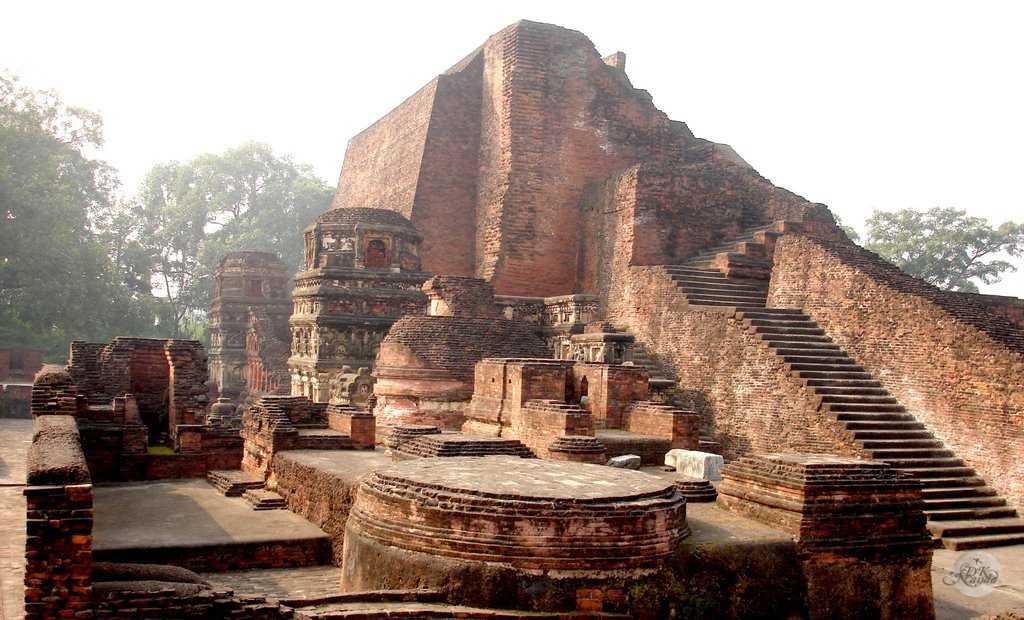

 Nalanda University
Nalanda University The Great Stupa
The Great Stupa Hiuen Tsang Memorial Hall
Hiuen Tsang Memorial Hall Pawapuri
Pawapuri Bodh Gaya
Bodh Gaya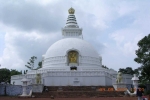 Rajgir
Rajgir Patna
Patna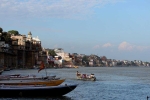 Varanasi
Varanasi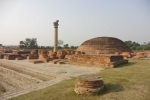 Vaishali
Vaishali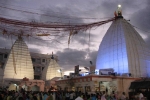 Deoghar
Deoghar